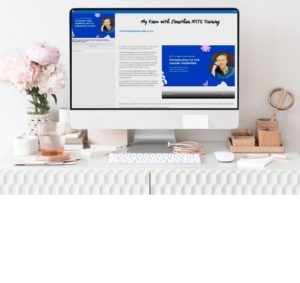Task requirements for the IELTS READING
If you are looking to do well in the Reading section of the IELTS Test, the first thing to understand is what IELTS Reading is testing.
Written by specialist materials writers, these heavily tested questions formats serve a different testing function.
Some websites claim these functions are secret tips and tricks, but they’re not really.
Put simply, once you understand the function of a section this, you can attempt the task more confidently knowing what you need to do.
IELTS Reading – Question Types
In each reading section, you will find several different tasks.
These include:
- Answering multiple choice questions
- Writing short answers to questions
- Completing sentences, notes, a summaries, flow charts or a tables
- Labelling diagrams
- Classifying ideas into different categories
- Matching tasks, for example, headings to paragraphs or people to ideas.
- Deciding if ideas or opinions are correct, incorrect or not given
The questions test your general level of language and your ability to do the following:
- Identifying the writer’s overall purpose.
- Following key arguments in a text.
- Identifying particular opinions and attitudes.
- Locating specific information.
- Distinguishing main ideas from other supporting details.
- Selecting the correct information from a text to complete a diagram, summary, table or set of notes.
What is the difference between Academic Reading and General Reading?
There is clearly a difference in the purpose of each test format.
General IELTS reading considers your working knowledge of English.
This means it presents the kind of language you would meet in everyday situations, and tests you ability to converse and understand in these situations.
IELTS Academic reading considers your ability to comprehend less familiar language, the kind of language you would find in university lectures, journals and papers.
It also assess your ability to work with and present these more complex ideas clearly.
Is there a difference in scoring?
Not only is there is a difference in the language of the exams, the scoring is formatted differently as well.
The equivalent score in IELTS General reading works out to be 0.5 of a band score higher than the IELTS Academic score.
If you have a score of 37-38 out of 40, you would get a band 8.5 in the General test.
If you have a score of 37-38 out of 40, you would receive band 8.0 in the Academic test.
Academic Reading Format ✍️
The IELTS Reading module has three reading passages taken from books, magazines, journals or newspapers.
The passages cover academic topics from scientific to historical interests.
The first two reading passages have 13 questions each, and the last one has 14 questions.
Although the topic material is specialised, the material is written for a general, non-specialist audience, so you don’t need to have specialised knowledge of the topics areas.
Specialised vocabulary needed for the task is often explained in the text or in a key
The text includes titles and sometimes captions, photos and illustrations, which help you to grasp the general meaning of the text.
If a text contains technical terms, a simple glossary is provided.
The total word length of all the texts can vary between 2,000 and 7,500 words.
At least one passage, usually Section 3, contains an argument and/or a viewpoint.
General Reading Format ✍️
In this format the texts are about more general topics or are related to work.
The General Training Reading paper has three sections and each section is more challenging than the previous one.
Section 1: contains two or three short factual texts, one of which may have 6-8 short texts related to each other by topic, e.g. hotel advertisements.
These topics are relevant to everyday life in an English-speaking country and a working knowledge of English.
Section 2: contains two short factual texts focusing on work-related issues. These could be about, for example, applying for jobs, company policies, pay and conditions, workplace facilities or staff development and training.
Section 3: contains one longer, more complex text on a topic of general interest.
In this section, you are likely to see passages taken from notices, advertisements, company handbooks, official documents, books, magazines and newspapers.
Is the Marking and Assessment the same?
The Reading test contains 40 questions and each correct answer is given one mark.
The Academic and General Training Reading Tests are not graded to the same level.
The marking of the papers is the same, but the assessment is different.
The Academic Reading Test is more challenging in content than the General Training Test, and more questions need to be answered correctly to receive the same band equivalent in the General Training Test.
Is there anything to remember in the test?
There are always some key things to remember.
An answer which is above the word limit specified for the task does not receive a mark, so it is important to read the instructions carefully.
For questions where you have to write abbreviations, numbers or Roman numerals, don’t include any other information.
For questions where you have to complete a gap, write only the missing word(s) on the answer sheet.
Check what the word limit for each question is!
Spelling and grammar must be correct. The final score is converted to a whole or half band on the IELTS band scale.
What can you do to improve your performance?
- Make sure you are answering the question correctly. IELTS is notorious for false friends; information that might appear to be correct, but isn’t.
- It might help to read the questions before you read the passage to avoid this 👍
- Manage your time. Do not spend too much time on a question you find difficult. Answer the others and then come back to it. 👍
- Look at visuals and subtitles to get a general idea of what the passage is about.
- Identify the topic sentence in each paragraph. This often gives you a clue to the answer might be. 👍
- Use reading strategies such as skimming and scanning to help you find the answers.
- Don’t worry if you don’t know the meaning of every single word in the text. You can often guess the meaning of the words you don’t know from the context.
- Correct grammar and spelling are important. 👍
- Make sure you check your answers. Is the answer the relevant to the questions and is the language you used is correct. 👍
Use tips and information on this website to help make it easier to obtain a higher score, but remember you still need to work at learning the language to be successful.
I’m Jonathan
I’ve taught IELTS and University English in more than a dozen universities and schools around the world.
I’m a parent, traveller and passionate about language teaching and helping students achieve their dreams.
Whilst living in Austria or working in Asia, I run IELTS courses to help students get to where they want to be.
If you are serious about IELTS, connect with me to see how I can help you.




Was this helpful? Leave a comment :)